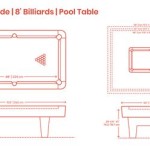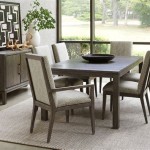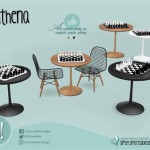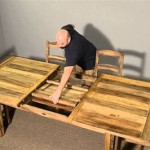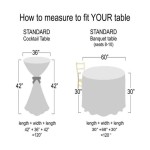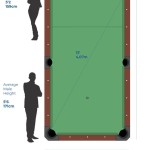The Versatile Dining Room Buffet Table: A Guide to Style and Functionality
The dining room buffet table, often referred to as a sideboard or credenza, serves as a multifaceted piece of furniture that enhances both the aesthetic appeal and functional utility of a dining space. Its historical roots lie in serving food during elaborate meals, but its modern applications extend far beyond this primary purpose. Understanding the various aspects of a dining room buffet table, from its different styles and materials to its practical uses and placement considerations, is crucial for selecting the right piece and maximizing its benefits within a home.
Styles and Designs of Buffet Tables
The stylistic diversity of dining room buffet tables is immense, reflecting trends across different eras and design philosophies. Recognizing these various styles enables a homeowner to choose a piece that harmonizes with the overall décor of their dining room. Some of the most common and enduring styles include:
Traditional: This style often features ornate detailing, such as carved legs, decorative moldings, and antique-inspired hardware. Traditional buffet tables are usually constructed from hardwoods like mahogany, cherry, or walnut, finished with rich stains and glosses. They exude a sense of formality and timeless elegance, often incorporating design elements from periods such as Queen Anne, Chippendale, or Victorian.
Modern: Characterized by clean lines, minimalism, and a focus on functionality, modern buffet tables typically employ materials like stainless steel, glass, and sleek wood veneers. They often feature geometric shapes, handle-less drawers and doors, and a streamlined aesthetic. Modern buffet tables aim for a sophisticated and uncluttered look, blending seamlessly into contemporary dining spaces.
Mid-Century Modern: This style, popularized in the mid-20th century, combines elements of modern design with natural materials and organic shapes. Mid-century modern buffet tables often feature tapered legs, sliding doors, and a warm color palette. Teak and other hardwoods are commonly used, and the overall design emphasizes both form and function, creating a balance between retro charm and modern practicality.
Rustic: Evoking a sense of warmth and natural beauty, rustic buffet tables are characterized by their use of reclaimed wood, distressed finishes, and rugged hardware. They often feature visible wood grain, knots, and imperfections, adding to their unique character. Rustic buffet tables are ideal for creating a cozy and inviting dining atmosphere, complementing farmhouse or country-style interiors.
Contemporary: This style represents a fusion of different design elements, often incorporating aspects of modern, minimalist, and transitional styles. Contemporary buffet tables may feature bold colors, asymmetrical designs, and innovative materials. They tend to be trend-conscious and experimental, reflecting the latest developments in interior design.
The selection of a particular style should be carefully considered in relation to the existing furniture and décor of the dining room. A harmonious blend of styles can create a cohesive and visually appealing space, while a mismatched combination can detract from the overall aesthetic.
Materials and Construction
The materials used in the construction of a dining room buffet table significantly impact its durability, appearance, and overall value. Choosing the right materials is essential for ensuring that the piece will withstand regular use and maintain its beauty for years to come. Common materials used in buffet table construction include:
Hardwoods: Woods like oak, maple, cherry, and walnut are prized for their strength, durability, and natural beauty. Hardwood buffet tables are typically more expensive but offer superior longevity and resistance to wear and tear. They can be stained in a variety of colors and finishes to complement any décor.
Softwoods: Pine and cedar are examples of softwoods often used in furniture construction. While generally less expensive than hardwoods, they may be more susceptible to scratches and dents. Softwood buffet tables are often painted or stained to enhance their appearance and provide protection.
Veneers: Wood veneers consist of thin layers of real wood applied to a core material, such as plywood or MDF (medium-density fiberboard). Veneered buffet tables can offer the look of solid hardwood at a lower cost. The quality of the veneer and the core material is crucial for ensuring durability and preventing warping or cracking.
Metal: Stainless steel, wrought iron, and other metals are often used in the construction of modern and industrial-style buffet tables. Metal frames and legs provide strength and stability, while metal accents can add a touch of contemporary flair.
Glass: Glass is frequently incorporated into buffet table designs, particularly in doors, shelves, and tops. Tempered glass is a popular choice due to its strength and resistance to breakage. Glass elements can add a sense of lightness and transparency to the overall design.
Engineered Wood: Materials like MDF and particleboard are commonly used as core materials for buffet tables, particularly in more affordable options. These materials are engineered for stability and uniformity, but their durability may be lower compared to solid wood.
The construction quality of a buffet table is just as important as the materials used. Look for sturdy joints, well-fitted drawers and doors, and a smooth, even finish. A well-constructed buffet table will not only look better but also provide years of reliable service.
Functionality and Uses Beyond Dining
While its name suggests a primary function related to dining, the buffet table's utility extends far beyond simply serving food. Its multifaceted design allows it to serve diverse purposes, making it a valuable addition to any living space. The versatility of a dining room buffet table is one of its most compelling features.
Storage: One of the most significant benefits of a buffet table is its ample storage space. Drawers, cabinets, and shelves provide organized storage for dining essentials such as dinnerware, silverware, linens, and serving pieces. This storage capacity helps to keep the dining room clutter-free and ensures that everything is readily accessible when needed. The internal organization can be customized with dividers and organizers to maximize space and efficiency.
Serving Area: As its name implies, the buffet table provides a convenient surface for serving food during meals and gatherings. It can be used to display dishes, set out appetizers, or create a self-serve buffet. The tabletop surface allows guests to easily access food and drinks, while the storage space below can hold extra plates, napkins, and utensils. Using the buffet table for serving can free up valuable space on the dining table itself, making it easier for guests to interact and enjoy their meal.
Display Area: In addition to its functional uses, the buffet table can also serve as a display area for decorative items. The tabletop can be adorned with vases, sculptures, framed photos, and other personal touches. Shelves and cabinets can be used to showcase collectibles, artwork, or treasured family heirlooms. By carefully curating the items displayed on the buffet table, a homeowner can create a focal point that reflects their personal style and adds character to the dining room.
Bar Area: A buffet table can be transformed into a stylish and functional bar area. The surface can be used to mix drinks, while the storage space below can hold bottles of liquor, glassware, and bar accessories. Adding a wine rack or a small refrigerator can further enhance its functionality as a bar. A buffet table bar can be a great addition for entertaining guests or simply enjoying a relaxing drink at home.
Media Center: In more informal dining areas or open-concept living spaces, a buffet table can even function as a media center. It can house a television, speakers, and other electronic devices, while the storage space can be used to store DVDs, CDs, and other media-related items. Mounting the television above the buffet table can save floor space and create a streamlined look.
Considering these diverse functionalities when selecting a buffet table ensures that it meets the specific needs and lifestyle of the homeowner. Its adaptability contributes to its enduring popularity as a versatile piece of furniture.
Placement and Space Considerations
The placement of a dining room buffet table is a critical factor in optimizing both its functionality and its aesthetic impact. Careful consideration should be given to the size of the room, the layout of the furniture, and the flow of traffic. Proper placement can enhance the overall dining experience, while poor placement can create a cluttered or awkward space.
Room Size: The size of the dining room is the most important factor to consider when choosing a buffet table. A large buffet table can overwhelm a small room, making it feel cramped and uncomfortable. Conversely, a small buffet table may get lost in a large room and fail to make a significant impact. Measure the dimensions of the dining room carefully before selecting a buffet table to ensure that it is appropriately sized for the space. Allow sufficient space for walking around the table and opening drawers and doors without obstruction.
Traffic Flow: Position the buffet table in a location that does not impede the flow of traffic. Avoid placing it in doorways or in narrow passageways where it could create a bottleneck. Ideally, the buffet table should be located along a wall that is easily accessible but does not interfere with the movement of people around the dining table and other furniture. Consider the paths that guests will take when entering and exiting the dining room, and ensure that the buffet table does not create any obstacles.
Proximity to the Dining Table: The distance between the buffet table and the dining table should be carefully considered. It should be close enough to the dining table to be easily accessible during meals, but not so close that it feels cramped or obstructs the view. A distance of a few feet typically provides a comfortable balance between convenience and spaciousness. Consider how the buffet table will be used in relation to the dining table. If it will primarily be used for serving food, position it close to the dining table for easy access during meals. If it will mainly be used for storage or display, it can be placed further away.
Wall Space: Choose a wall that is both visually prominent and functionally suitable for the buffet table. A long, uninterrupted wall is often the best option, as it provides ample space for the buffet table and allows it to become a focal point in the room. Avoid placing the buffet table in front of windows or doorways, as this can block natural light and create an awkward visual effect. Consider the placement of electrical outlets and other utilities when choosing a wall for the buffet table. Ensure that there are sufficient outlets nearby for powering any electrical appliances that will be used on or near the buffet table, such as lamps or serving dishes.
Lighting: Proper lighting can enhance the visual appeal of the buffet table and make it easier to use. Consider adding a lamp or sconces above the buffet table to provide task lighting for serving food or displaying decorative items. Ambient lighting can also be used to create a warm and inviting atmosphere. Ensure that the lighting is evenly distributed and does not create any harsh shadows or glare. The type of lighting chosen should complement the style of the buffet table and the overall décor of the dining room.
By taking these placement and space considerations into account, one can ensure that the dining room buffet table seamlessly integrates into the dining room and enhances both its functionality and aesthetic appeal.

32 Dining Room Storage Ideas Buffet Table Small

Dining Room Buffet Table Diy

Best Dining Room Storage Cabinets For Every Style And Budget

Buffet Styling 101 Blueprint By Kelly Dining Room Table Luxury

Dining Room Buffet Table Diy

Buffets Add Style To Every Space Nell Hill S

Handcrafted Modern Wooden Dining Room Buffet Table Handmade Credea Custom Made With Cherry Maple White Oak Or Walnut

Buffet Cabinet With Storage Kitchen Sideboard Table 55 Coffee Bar Doors White Modern Sideboards And Buffets Accent For Dining Room Living Entryway Com

Buffet Tables Sideboard Cabinets Frontgate

Belleze Modern Sideboard Buffet Cabinet With 3 Drawers 2 Doors Accent For Dining Room Hallway Bedroom Or Kitchen Troy Brown Com

